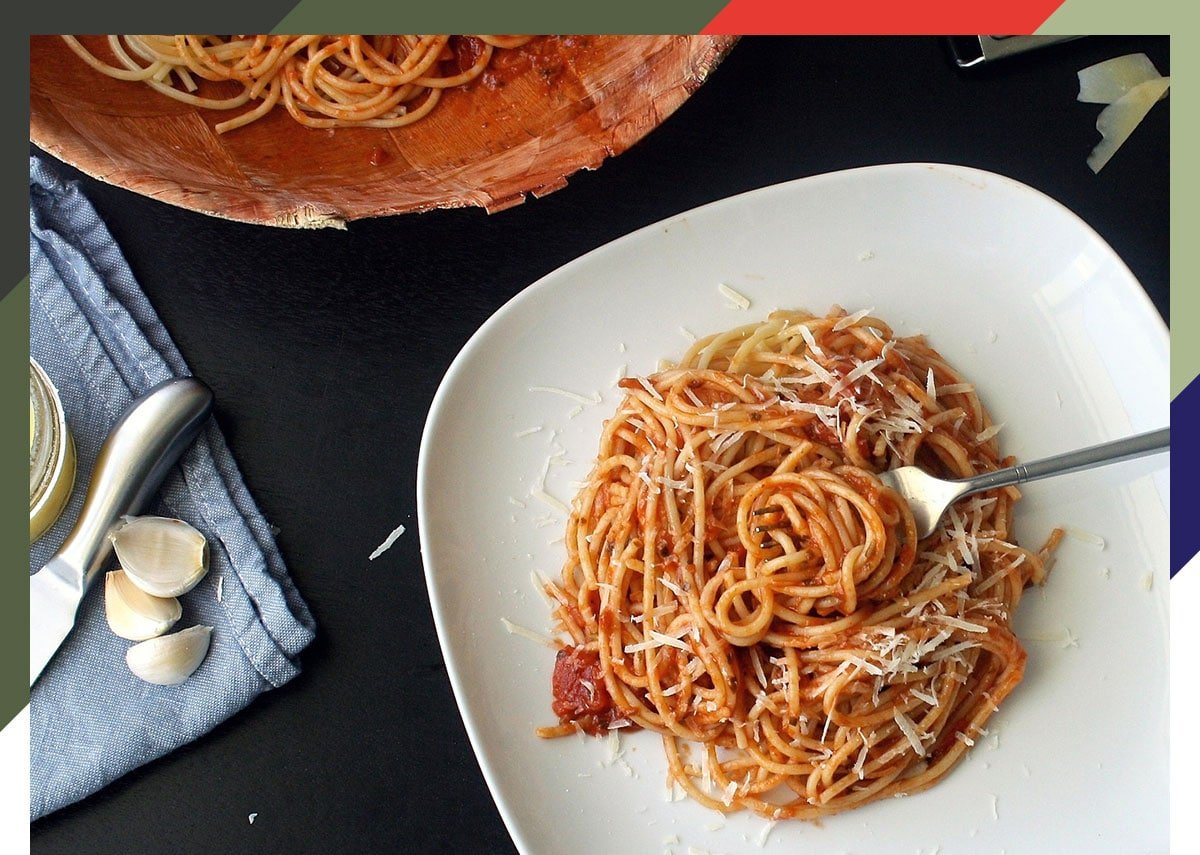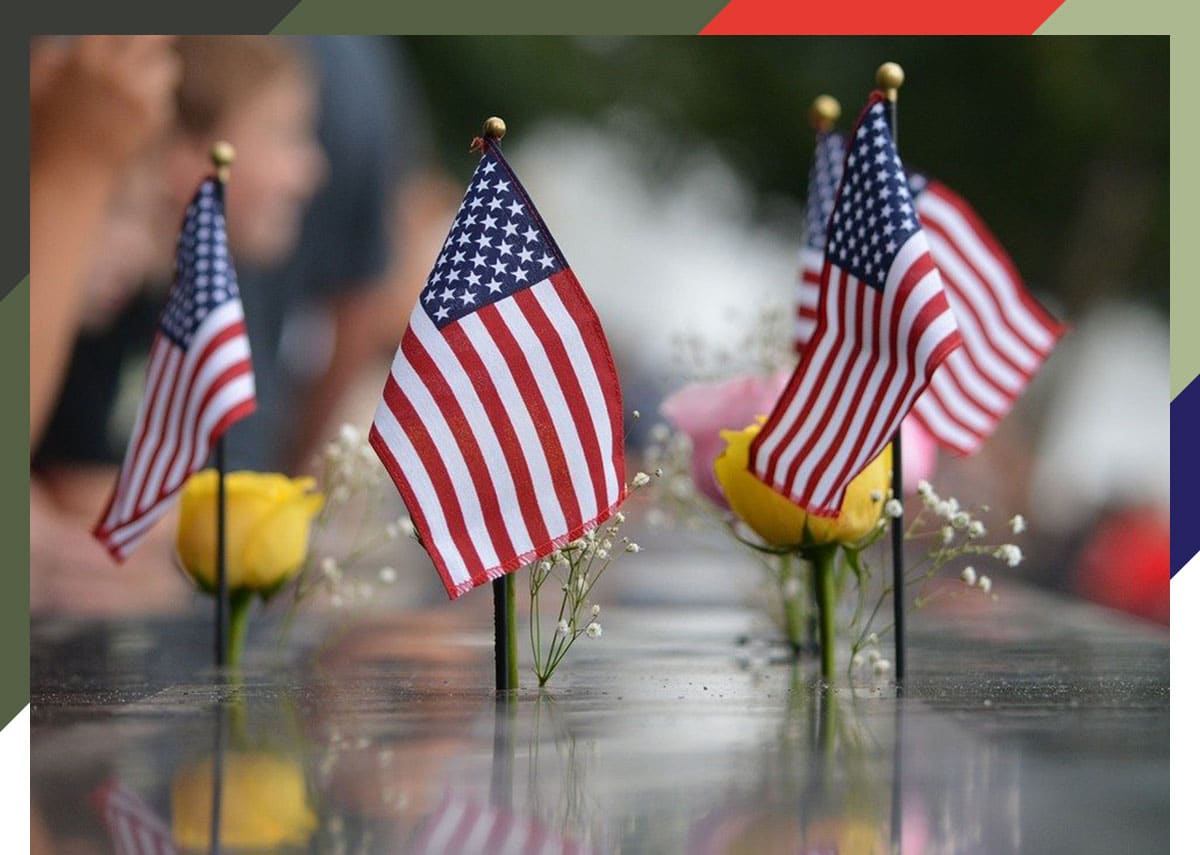Your deployed hero might have called them “Meals Rejected by Everyone” or “Meals Rarely Edible.” Yes, we’re talking about the humble MRE, which actually stands for “Meal Ready to Eat.” And while we don’t include MREs in our military snack boxes, we do think they’re pretty fascinating, not only for the macronutrients that pack, but also for the science that has gone into developing them.
MREs are self-contained, individual rations for service members in combat or conditions where a food facility isn’t available. MREs do not need a dedicated kitchen space to be prepared, or even a table. They don’t need to be refrigerated, and they’re lightweight. Amazingly, each MRE provides about 1,250 calories. Why so much? Because service members who must eat MREs are burning more than 4,000 calories per day, according to the Institute of Medicine. The macronutrient breakdown is: These proportions make for a filling meal, three times per day, with no nutritional need for snacks to supplement them. (But that doesn’t mean a military snack box won’t be appreciated and consumed!)
Every MRE includes a flameless ration heater, which, when activated, brings the food to the temperature you’d expect for a hot meal. Instructions with the MRE explain how to pour water into the heater and insert the food packet into it. Most meals come only with a plastic spoon and no other utensils. Rarely do they come with a full set, though it isn’t unheard of. This means most MREs can be easily eaten using only a single utensil. We dare you to try it at home. Inside, your soldier will find what is called an “accessory pack,” which contains things like chewing gum, a matchbook, napkin or toilet paper, a moist towelette, and extra seasons. Every MRE also comes with a powdered beverage, like instant coffee, a fruit drink, cocoa, a sport drink, or even a dairy-based shake. Food-wise, there’s quite a lot inside: the main course, a side dish, a dessert or snack, crackers or bread, and a spread (usually cheese, jam, or peanut butter). Candy is also quite common.
We know they aren’t quite like home-cooking, but we can’t help but to feel a little hungry reading these three sample MRE menus, courtesy of GoArmy.com. Mexican-style corn Crackers and jam Dairy shake Candy Red pepper seasoning Flameless heater
When you’re in the field, you can’t be picky about your food. MREs are the perfect solution, but they’re also actually pretty darn cool. For example:
Want to make up for your hero’s stint eating MREs cooked with a flameless heater? Or just want to say “thank you,” or “I love you,” or “I miss you,” or “Happy Birthday!,” or literally any other sentiment you can think of? We got you! The military care package experts here at My Hero Crate create and assemble the best armed forces snack boxes and send them to the recipient of your choice, no matter what branch of the military they’re in. Shipping is free, and yes — we even ship overseas! Learn more about our military snack boxes, and place your order today.
We Send Snacks, Ready to Eat in a Military Care Package to Your Hero
MRE Nutrition
MRE Contents
Sample Menus
Chili w/ Beans
Hot beverage bagVeggie Burger in BBQ Sauce
Dried fruit
Chocolate banana muffin top
Wheat snack bread
Gum
Hot sauce
Lemon Tea
Flameless heater
Hot beverage bagChicken Fajita Tortilla
Chocolate pudding
Baked snack crackers
Cheese spread
Seasoning Blend
Coffee, Irish Cream flavor
Flameless heater
Hot beverage bag Fun MRE Facts
A Military Snack Box that Far Exceeds MRE Quality
Month: September 2020
How to Talk About Suicide
Ways You Can Help Your Hero in Need
My Hero Crate has made it our mission to improve the lives of veterans. Our method is to build military care packages for every branch of the armed forces and to ship them anywhere in the world, wherever your hero is living. We also support nonprofit, veteran-focused organizations because we put our money where our mouth is.
We are not experts in mental health or military suicides. We aren’t trained psychiatrists with an in-depth knowledge of how the brain works. But we do care a whole lot. And that’s why this month, National Suicide Prevention Month, we wanted to share with you some of the research we found about helping military veterans access the care they need, should they ever experience suicidal ideation. If this blog post helps even one veteran and the people that care about them get through a difficult time, then writing it will have been worth it.
A Long History of Veteran Suicide
It is more than unfortunate that United States military veteran suicide has been a phenomenon for decades; the very first suicide prevention center opened in 1958 because of the prolific number of veteran suicides. In the years since, the U.S. and Veterans Affairs have taken steps to reduce rates of suicide by establishing additional mental health resources and legislation. It is difficult, however, to fix the root cause of the problem.
According to a report published by the VA in 2016, an average of 20 veterans die from suicide each day. Further analysis of the VA study shows that the rate varies by age group. Sixty-nine percent of suicides involved veterans 50 and older, whereas 31 percent involved younger veterans. Ninety-seven percent of victims were male.
The cause? It’s not precise, but the majority of veterans who commit suicide reportedly struggled with post-traumatic stress disorder (PTSD), depression, and combat-related guilt. Transitioning back to civilian life can also be quite difficult, especially after years in the military.
Risk Factors for Veteran Suicide
The National Center for Veterans Studies at the University of Utah and the VA both say there are risk factors that increase the likelihood of military veterans experiencing suicidal ideation:
- -Feelings of depression or hopelessness
- -PTSD and/or a history of trauma
- -Access to firearms
- -Combat experience and combat-related guilt (although combat doesn’t always play a primary role in suicidal ideation); severe combat conditions
- -Lengthy or frequent deployments, or longer times at war
- -Location of deployment
- -Branch of military
- -Lower level of education
- -Divorce soon after the end of deployment
- -Sustaining life-altering injuries
- -Brain/head trauma
- -Witnessing traumatic events, such as their fellow soldiers being killed
- -Military structure and re-acclimating to civilian life
Suicide Warning Signs to Watch For
It’s difficult to predict when someone may be considering suicide, especially if they tend to hide their emotions. However, there is a set of common warning signs you can watch for as you interact with your hero at home, over the phone, or via mail.
- -They make statements about suicide, such as “I wish I were dead,” or, more specifically, “I’m going to kill myself.”
- -They withdraw from social contact, including their friends and other family members.
- -They seem preoccupied with death and dying, or violence.
- -Their personalities may change, or they may have severe mood swings.
- -They participate in risky behaviors, including using drugs, abusing alcohol, or driving recklessly.
- -They express that they feel trapped or hopeless.
- -They say goodbye to people as though they’ll never see them again.
- -They change their normal routine, including when and how often they eat or sleep.
- -They give away their belongings or “get their affairs in order.”
- -They have acquired means to commit suicide, including purchasing a gun, accessing pills, etc.
How to Start the Conversation with Your Hero
Don’t worry that if you ask your hero about suicidal thoughts or feelings, you push them into actually doing it. Giving them a chance to express their feelings can actually reduce their risk of acting on them. To do so, you can start your one-on-one conversation by asking some sensitive questions, like:
- -How are you coping with what has happened in your life?
- -How are you feeling about everything that has happened with you?
You should also ask some direct questions, like:
- -Are you thinking about hurting yourself?
- -Are you thinking about suicide?
- -Are you thinking about dying?
Your questions can continue to delve into more detail, like:
- -Have you ever thought about suicide before?
- -Have you ever tried to hurt yourself before?
- -Have you thought about how or when you’d do it?
- -Do you have access to weapons, or other things you could use to hurt yourself?
What Not to Say
Most suicidologists agree that committing suicide isn’t a decision. In an essay by Gerben Meynen, a professor of forensic psychiatry at Utrecht University in the Netherlands, he argues that “having a mental disorder takes away a person’s ability to choose alternatives.”
In fact, until the most recent edition of the Diagnostic and Statistical Manual of Mental Disorders (DSM), “loss of freedom” was listed as a component of mental illness. This description has now been updated to an “impairment in one or more important areas of functioning,” which is said to include “one or more losses of freedom.”
It makes sense, then, that talking about suicide in a way that insinuates it is your hero’s choice would not be productive, and would instead shame them for their struggle. Never refer to committing suicide as selfish, stupid, cowardly or weak, a choice, or a sin, regardless of your personal beliefs.
You should also avoid “making it about you.” It is likely your hero has already thought about the repercussions of suicide and how it may affect their loved ones, but still views it as the only escape from their feelings.
What You Should Do
If your hero is considering suicide, you can help them get the resources they need. You can encourage them to call the National Suicide Prevention Lifeline at 1-800-273-8255, and offer to sit with them as they make the call. To access responders with experience helping veterans, your hero should press “1” at the prompt. If they prefer to text with a responder at the Lifeline, they can send a message to 838255.
Help them locate the phone number for their doctor at the VA to get access to the VA Mental Health program and VA Suicide Prevention program. There are so many non-profit organizations dedicated to veterans’ mental health — just like the ones we donate to with the proceeds from each of our military care packages. You can learn more about them at veteranscrisisline.net.
Be supportive. Express your love for them, and your concern.
A Heartfelt Sign-Off from Your Favorite Military Care Package Experts
Your personal military hero is also ours. It is our sincere hope that you and your veteran will learn to stave off the thoughts of suicide while living your best possible lives together.
What is Patriot Day?
Join My Hero Crate’s Military Care Package Experts in Solemnly Acknowledging This Holiday
Most people remember exactly where they were and what they were doing when they learned that both towers of the World Trade Center in New York City and the Pentagon were attacked by terrorists using hijacked commercial airlines, and when United Airlines Flight 93 crashed in Pennsylvania, a foiled attack that killed everyone aboard.
The news was devastating and played 24/7 for weeks as the American people reeled in shock, and New York, Virginia, and Pennsylvania began clean-up efforts and the search for survivors; there weren’t many.
Unlike other tragic events like this one, we remember it all by the date: September 11, 2001.
How the Day of Mourning Came to Be
After the terrible attacks on civilians in our country, heroes assembled at the plane crash sites to try to find survivors among the wreckage, including firefighters, police officers, and members of our armed forces.
Just over a month later, on October 25, 2001, the United States House of Representatives passed a bill to make September 11 a national day of mourning. The Senate unanimously voted in favor. As a result, President George W. Bush declared the first Patriot Day in 2002.
How to Observe Patriot Day
Although Patriot Day is not a federal holiday, so schools and businesses remain open, people still take steps to observe the day of mourning.
-Some people hold a moment of silence at the same time the jet hit the first tower of the World Trade Center: 8:46 a.m. Eastern Daylight Time.
-Americans are encouraged to display flags outside their homes to express their love of the country.
-Some New Yorkers spend the day quietly and without flair, especially those who experienced the aftermath or lost loved ones in the attacks.
-The United States flag is flown at half-mast throughout the world.
-Memorial events are held in honor of the 2,977 victims who perished and those who lost their lives during search and rescue efforts.
-Non-profit organizations assemble volunteer opportunities for special projects across the country.
How You Can Observe this Day
If you’re looking for a unique way to memorialize Patriot Day, consider doing small things close to home to impact the lives of those around you.
Send a thank-you letter or snack box.
You can thank your local firefighters for their everyday bravery in the face of danger as they rescue people from burning buildings. You can thank your local National Guard unit for their willingness to sacrifice their time to serve regionally and sometimes overseas. You can say thanks to the troops stationed at one of America’s many military bases. If you know of a hero from the September 11 attacks, say thank you to them, too. Receiving a note or snack box will make their day.
Do something kind for someone else.
Spend your day performing good deeds and requesting nothing in return. Gather a few extra shopping carts and put them in the cart return at the grocery store. Pick up litter in your local park. Offer to mow an elderly neighbor’s lawn for free.
Display a flag.
Fly an American flag in your yard to display your patriotism for all to see. Be sure to follow Flag Code and be respectful as you observe the day.
Take your own moment of silence.
At 8:46 a.m. eastern time, sit quietly, with the TV off and your phone on vibrate and reflect on why you’re thankful for living in the U.S. as you remember those who perished in 2001.
Donate to an organization with a mission important to you. Research a nonprofit or charity group that you think is doing amazing work for the American people, and make a monetary donation to them to contribute to their projects. At My Hero Crate, we pledge to donate a portion of our proceeds to a veteran-focused nonprofit for every military care package we sell. If you’re able to make a regular donation, rather than an annual one, consider doing it.
Let Us Know Your Plans for Patriot Day
Are you doing something special in observance of this important day? Tag us on Instagram @myherocrate to show us how you’re paying tribute.


